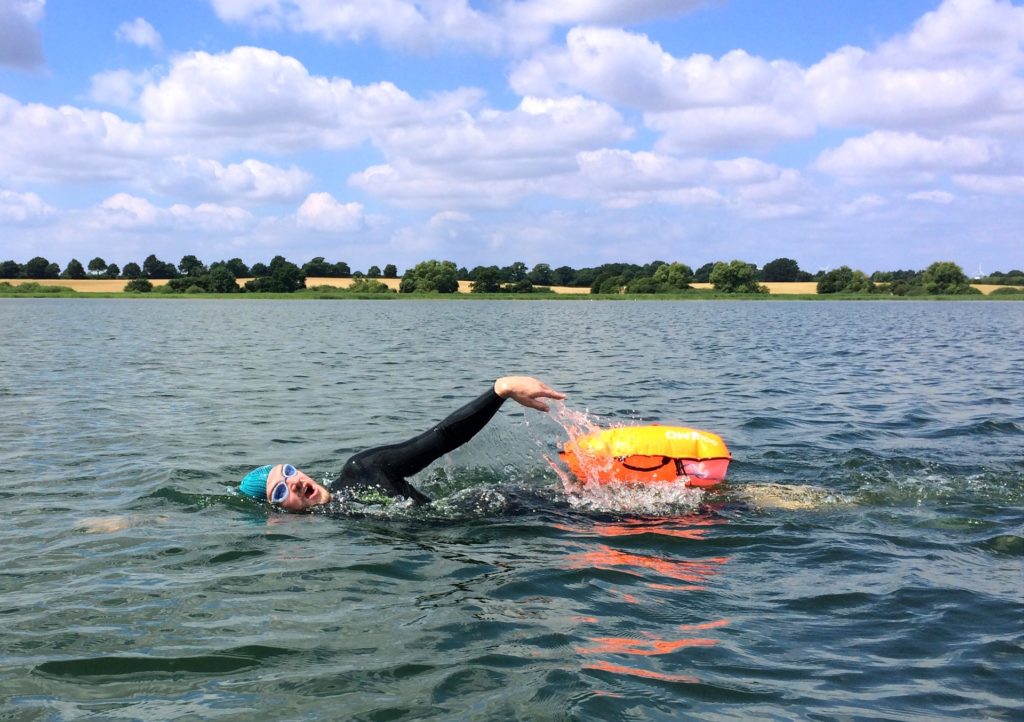Water Safety Tips for New (And All) Triathletes

.As the days stay longer and hotter, training in open water and outdoor pools becomes more readily available. However, every swimmer should have safety on their mind first- without our safety, we don’t have anything else! Here are some water safety tips for new and all triathletes to stay safe this summer while swimming:
Water Safety Tips for New (And All) Triathletes
- Have your Gear: Water safety starts with you, and being prepared with the right gear is essential. The most important item for open water swimming is a swim buoy, which you put around your waist and the buoy will trail behind you. A swim buoy is brightly colored so you are easy to spot, and they will always float in case of an emergency. Anyone who is a weaker swimmer should have some sort of flotation device; in most places, this needs to be something that is Coast Guard approved (in the United States specifically) and it’s recommended that it provides arm mobility and works to avoid the swimmer’s head being inaccessible.
- Swim with a Lifeguard/Someone Else: Many swimming areas, especially lakes, will not allow swimmers to swim during off-hours. Since drowning is a preventable liability, it’s advised to not do any open water swimming without a lifeguard or at least with someone else. For example, I’ll swim in the ocean where my parents live in May or September/October when there’s no lifeguard, but my mom comes to the beach with me just to make sure everything is okay (it’s also an excuse for her to bring a book to the beach!). However, this isn’t something I’d recommend to newer swimmers- I’ve been practicing in this ocean for a while and am very in tune with the tides and temperatures I’m comfortable in. Having a buddy or especially a lifeguard is critical to maintaining an Emergency Action Plan (EAP) and allowing it to save lives when an emergency does happen.
- Swim in the Designated Area: Most open water areas will have ropes, flags, or buoys that divide the parts that are ok to swim in and the parts to avoid. This is for avoiding going too deep, being in sight of lifeguards, and to ensure that any emergency or change in weather can be responded to quickly. This rule is pretty self explanatory since you’ll likely get whistled at if you don’t do it- but is also helpful for race prep since open water swims will have boundaries as well.
- Sun Safety: Avoiding heat-related illnesses is a huge part of swimming safety- being in colder water can trick swimmers into thinking they aren’t being affected by the sun! Before swimming, apply sunscreen and reapply every time you take a break. Stay hydrated and have access to shade, whether it’s an umbrella or a tree. And if there’s a heat advisory, use your best judgement- some people do heat acclimation workouts, but for someone newer to swimming, it’s not something I would recommend.
- Feet First: Just like the shallow end of the pool- don’t dive! The first time you’re in a specific body of water, enter feet first. You will use the bottom half of your body to get used to the water. Another way to acclimate is to splash some on your wrists and the back of your neck – this is especially helpful for folks with breathing issues, but is an easy way to be prepared for your swim.
- Take Breaks: Being able to swim a mile or more doesn’t happen overnight, and it’s okay to stop and rest! If you’ve finished a loop and think you should have some water or reapply sunscreen, do it- listening to your body is most important for sustained success in endurance sports. Make sure that you are prepared with sunscreen, water, food, or anything else you’d need during breaks.
- Weather Safety: When swimming outside, there are a few things to keep in mind with weather.
- Thunderstorms – lower visibility and the threat of lightning, it’s unsafe to swim and lifeguards will keep swimmers out of the water until 30 minutes after the last sound of thunder.
- Heavy rain and Fog are also unsafe with lower visibility- in a situation where a swimmer is struggling or drowning, it is more difficult for lifeguards to make a rescue and even the strongest swimmers should avoid this.
- Heat and humidity play a part as well, especially if you have a family history of skin cancer or you’re on a psychotropic medication that affects heat tolerance. I have both, and can tell you even with 16 years of swimming, I still avoid certain levels of heat and sun exposure. Swimmers should always take sun safety into account, and knowing your limits is a vital part of this.
Swimming safely is pretty straightforward, but vital for new athletes to gain confidence and stay healthy while in the water.
With these tips, go on and enjoy the water!

Danielle Moore is a swimmer and triathlete living outside Philadelphia, Pennsylvania. Her athletic journey picked up at 10 years old when she started swimming in the summers, and ended up as a butterflyer for both her high school and college teams. She ran track in middle and high school as well, but swimming is her true passion in sports. Danielle has also been teaching swim lessons since 2010 and received her US Masters Swimming Level 1 Coach certification in March 2022. She raced her first sprint triathlon in 2019 and has been hooked ever since- she will be racing her first half Ironman in September 2022.









